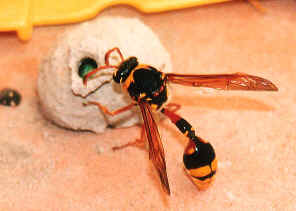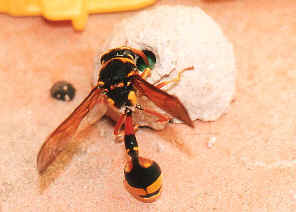|
|
Yellow Potter Wasp - Delta campaniforme
FAMILY VESPIDAE
This page contains pictures and information about Yellow Potter Wasps that we found in the Brisbane area, Queensland, Australia.
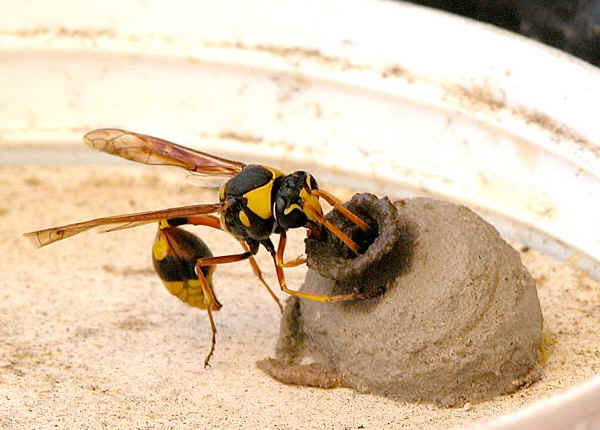
- Body length 22mm
This Potter Wasps look similar to other species of Mud-Dauber Wasps that we found but they build mud nest with different shape. They are solitary wasps. They are also common around Brisbane. The wasps are dark brown in colour, with yellow banded abdomen. There is yellow pattern on their thorax. Their narrow waist is very long at the middle of their body.
The wasps build jug shape mud cells in sheltered locations. Female wasp builds the nest, then collects three to four small hairless caterpillars (20-30mm) and put inside the nest. Then she will lay an eggs in the nest as well.
The mother wasp finds those caterpillars amongst near by plants, paralyzes them and put them inside the mud cell. The wasp stings the caterpillars to paralyze them. Those caterpillars are the food of her larva. The mother wasp will lay one egg for each cell before sealing it.
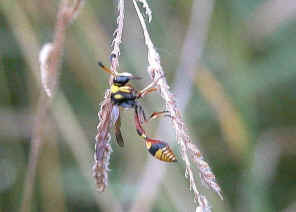
- At night, the wasp does not rest near the near the mud pot, instead it rests on grass top after sun set., and resumes its job the other day.
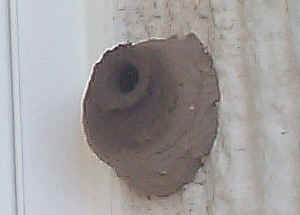
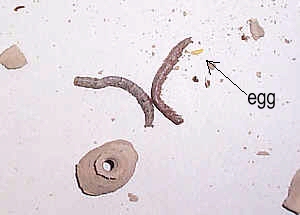
- Pot diameter 15mm
- We opened one cell and found some small caterpillars (20mm) and a yellow egg (3mm) inside. We try to raise the wasp but without success. The egg turned into larva and fed on the caterpillars. However, the larva dead after a few days. We may try again if we found another one. This Mud-Dauber Wasp is not as popular as the Mud-dauber Wasp in our area.
We recorded another species of Mud-Dauber Wasps, they look similar but build different style of mud nest and capture spiders instead of caterpillar for their young. More information on this page.
How the pot is built
- Those female Potter Wasps like to build their pots on the table outside our backyard, where is an open area but under cover, protected from wind and rain. Every year early summer there will be some pots built there.


- The wasp found some damp mud near by. She collected the mud, formed a small mud ball about 2mm diameter, then brought it back to the pot site. Each trip she brought back a little mud each time. Each trip took her about five minutes. It took her half a day to build a pot.

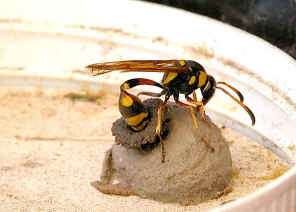
- She used her mouth and front pair of legs to carry the mud. She laid the mud mainly by her mouth, then checked with her antennae. The pot was dome-shaped, about 15mm in diameter. At the top about 45 degree, she made a bottleneck-shaped entrance. The pot was about finished. The last procedure was she laid a white substance covered the inter wall of the pot. This might help to strengthen the wall.
- After the pot was ready, the wasp started to find caterpillars and put inside the pot. She might find three to four caterpillars for each pot. Then she laid an egg in the pot. Finally, she remove the bottle neck and closed the entrance. This pot was done. The wasp found another site and built another pot.
